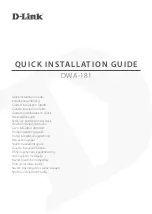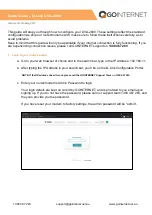
RC56D, RC336D, and RC144D Modem Device Sets Designer’s Guide
1154
Conexant
2-5
2.8 FAX CLASS 1 AND FAX CLASS 2 OPERATION
Facsimile functions operate in response to fax class 1 commands when +FCLASS=1, and in response to fax class 2
commands when +FCLASS=2.
In the fax mode, the on-line behavior of the modem is different from the data (non-fax) mode. After dialing, modem operation
is controlled by fax commands. Some AT commands are still valid but may operate differently than in data modem mode.
Calling tone is generated in accordance with T.30.
2.9 VOICE/AUDIO MODE
Voice and audio functions are supported by the Voice Mode. Voice Mode includes three submodes: Online Voice Command
Mode, Voice Receive Mode, and Voice Transmit Mode.
2.9.1 Online Voice Command Mode
This mode results from the connection to the telephone line or a voice/audio I/O device (e.g., microphone, speaker, or
handset) through the use of the +FCLASS=8 and +VLS commands. After mode entry, AT commands can be entered without
aborting the connection.
2.9.2 Voice Receive Mode
This mode is entered when the +VRX command is active in order to record voice or audio data input at the RIN pin, typically
from a microphone/handset or the telephone line.
Received analog voice samples are converted to digital form and compressed for reading by the host. AT commands control
the codec bits-per-sample rate.
Received analog mono audio samples are converted to digital form and formatted into 8-bit unsigned linear PCM format for
reading by the host. AT commands control the bit length and sampling rate. Concurrent DTMF/tone detection is available at
the 7200 Hz sample rate.
2.9.3 Voice Transmit Mode
This mode is entered when the +VTX command is active in order to playback voice or audio data to the TXA output, typically
to a speaker/handset or to the telephone line.
Digitized voice data is decompressed and converted to analog form at the original compression quantization sample-per-bits
rate then output to the TXA output.
Digitized audio data is converted to analog form then output to the TXA output.
2.9.4 Audio Mode
The audio mode enables the host to transmit and receive 8-bit audio signals. In this mode, the modem directly accesses the
internal analog-to-digital (A/D) converter (ADC) and the digital-to-analog (D/A) converter (DAC). Incoming analog audio
signals can then be converted to digital format and digital signals can be converted to analog audio output.
2.9.5 Tone Detectors
The tone detector signal path is separate from the main received signal path thus enabling tone detection to be independent
of the configuration status. In Tone Mode, all three tone detectors are operational.
2.9.6 Speakerphone Modes
Speakerphone modes are controlled in voice mode with the following commands:
Use Speakerphone After Dialing or Answering (+VSP=1). +VSP=1 selects speakerphone mode while in +FCLASS=8
mode. Speakerphone operation is entered during Voice Online Command mode after completing dialing or answering.
Speakerphone Settings. The +VGM and +VGS commands can be used to control the microphone state (mute or on), adjust
the speaker volume, and microphone gain. The VGM and +VGS commands are valid only after the modem has entered the
Voice Online mode while in the +VSP=1 setting.
Room Monitor Feature. The Room Monitor function allows an application where a remote caller calls the computer to
monitor sound in a room.
Summary of Contents for RC144D
Page 87: ...INSIDE BACK COVER NOTES ...
















































